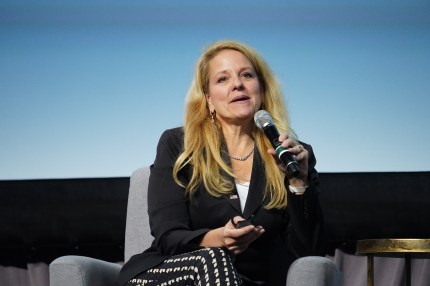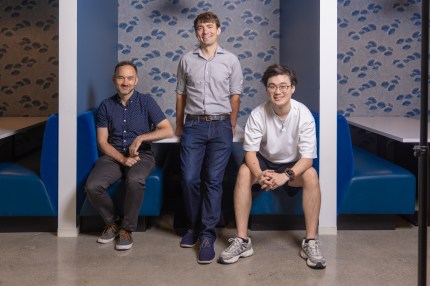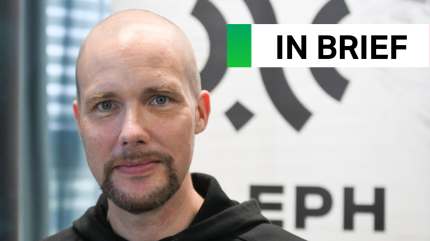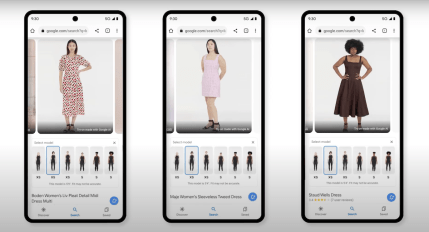Sophie Alcorn
More posts from Sophie Alcorn
Sophie Alcorn, attorney, author and founder of Alcorn Immigration Law in Silicon Valley, California, is an award-winning Certified Specialist Attorney in Immigration and Nationality Law by the State Bar Board of Legal Specialization. Sophie is passionate about transcending borders, expanding opportunity, and connecting the world by practicing compassionate, visionary, and expert immigration law. Connect with Sophie on LinkedIn and Twitter.
TechCrunch+ members receive access to weekly “Ask Sophie” columns; use promo code ALCORN to purchase a one- or two-year subscription for 50% off.
Dear Sophie,
I’m a citizen of India. I will graduate from a U.S. master’s degree program in the spring. I’m interested in working in space technology and will be applying for jobs in that field while I’m on OPT. I’ve heard that most space tech companies are reluctant to hire individuals on F-1 student visas due to export rules and other compliance issues. How can I one day pursue my dreams?
— Space Savvy
Dear Space,
You’re referring to the complicated topic of export control laws. Working in space tech can be tricky for an immigrant on OPT, H-1B or an O-1A. Listen to my chat with Bailey Reichelt, a regulatory and corporate attorney who focuses on this topic as it relates to the commercial space industry and tech startups. During our conversation, she explained export control laws and what companies, founders, and talent need to keep in mind when working on technology or sharing information.
For many, the answer is getting a green card, but the starting point is often an H-1B through the lottery. For the latest on this year’s annual H-1B lottery, register for my live, free educational webinar covering all you need to know on H-1Bs in 2024.
As we dive in to the work of commercial space technology and startups, it’s important to start with an overview of some of the basics, including EAR (Export Administration Regulations) and ITAR (International Traffic in Arms Regulations) and why these regulations make it difficult for space tech companies to hire individuals on student or even work visas.
A primer on export controls
According to Reichelt, the United States has two primary export control laws that govern how certain technology, software, technical data, and other materials are physically or electronically exported or shared with foreign countries and even foreign-born individuals living and working in the U.S. on a student or work visa. They are aimed at protecting U.S. national security, foreign policy, and economic interests:
- EAR (Export Administration Regulations) controls the export and import of both commercial and military-grade technologies and data. The U.S. Department of Commerce’s Bureau of Industry and Security (BIS) oversees EAR.
- ITAR (International Traffic in Arms Regulations) controls the export and import of military-grade products, services, software, and data, such as space tech. The U.S. Department of State’s Directorate of Defense Trade Controls oversees ITAR.
Your employer or prospective employer must apply for export-control authorization if you are working or will work on controlled technology — and are not a U.S. citizen or permanent resident (green card holder), or qualify under certain other categories such as being a refugee.
In the podcast, Reichelt says that obtaining export-control authorization is very resource-intensive for a company, especially an early-stage startup. It can take at least six months, and the outcome is often unpredictable. You will be subject to a background check, and your country of birth and citizenship will come into play. Major tech companies typically have the legal resources and the willingness to go down this path.
Therefore, becoming a permanent resident by obtaining a green card is the best way for an aspiring space tech engineer or founder from any country to avoid dealing with export control licensing requirements. You can apply for a green card now on your own without a company sponsor or even a job offer while you maintain your status as an F-1 student and work on OPT and STEM OPT. I recommend working with an immigration attorney to assist you with this process.
Consider a priority date through an EB-2 NIW
If you’re just starting out, you might not have a priority date in an EB-1, EB-2 or EB-3 category yet, which determines your spot in line waiting for a green card as dictated by the Visa Bulletin. There are multiple ways to get a priority date through an employer, but you can also lock in your initial priority date by self-petitioning an I-140 approved in one of these categories.
The EB-1A extraordinary ability green card and the EB-2 NIW (National Interest Waiver) advanced degree or exceptional green card are the only two green cards that allow an individual to petition for one on their own behalf.
The EB-2 NIW does not require the lengthy PERM labor certification process required for the EB-2 advanced degree or exceptional ability green card. The National Interest Waiver enables individuals to bypass labor certification if their work and skills will benefit the U.S. economy, education system, healthcare, or some other aspect of society.
The standard for qualifying for an EB-1A is much higher than for the EB-2 NIW. That also means the wait time for the EB-2 NIW is longer, particularly for those born in India and China, due to the numerical and per-country caps on green cards. Currently, the cutoff date (which determines who can file for adjustment of status, the last step in the green card process) in the EB-2 category for individuals born in India is May 15, 2012, compared to January 1, 2021, in the EB-1 category, according to the Dates of Filing chart in the Visa Bulletin for February 2024.
For the EB-2 NIW, you must show that you have an advanced degree or exceptional ability and that your work is in the interest of the U.S. To meet the advanced degree or exceptional ability requirement, you must have one of the following:
- A master’s or higher degree.
- A bachelor’s degree with at least five years of experience in your field.
- Any three of the following: 10 years of experience in your field, a license, a high salary, an exclusive membership in professional organizations, exceptional abilities and achievements.
To meet the national interest requirement, you must show that your work and skills:
- Have substantial merit or national importance.
- Will advance your field.
- Will benefit the U.S., such as creating jobs or substantially contributing to the economy.
When you apply for the EB-2 NIW, the date that the U.S. Citizenship and Immigration Services (USCIS) receives your petition is called your priority date. If your priority date is on or before the cutoff date in the Visa Bulletin, you can file for adjustment of status — the last step in the green card process. You can use your EB-2 NIW priority date if you later qualify and apply for the EB-1A to take advantage of the EB-1 category’s later cutoff date.
Upgrade to an EB-1A
If you already have a priority date from a previous I-140 in EB-2 or EB-3, you might soon be current in EB-1A. You will want to allocate your time wisely when you’re advancing your experience and qualifications for the EB-1A. Keep in mind that you’re trying to demonstrate to the USCIS that you are at the top of your field or subfield in a country or the world. Narrowing your field is usually more helpful than selecting a broad field. If your field is too broad, you may have difficulty proving that you are among the top in that field.
For the EB-1A, you must meet at least three of 10 criteria:
- Nationally or internationally recognized professional-level awards.
- Invitation-only membership in organizations with stringent selection criteria.
- Written articles published in professional trade publications, scholarly journals, or major media.
- You or your work has been featured in professional trade publications, journals or major media.
- Judging the work of others in your field or a related field.
- Made original contributions of major significance to your field, such as coverage in publications or your work has been used by others as demonstrated by contracts, licenses or patents.
- Your work has been displayed at artistic exhibitions or showcases, which primarily applies to UX/UI designers in tech.
- Have a leading or critical role at your company, such as a project manager or a product development lead.
- Command a high salary compared to others in the field, ideally in the top 10% for your position and location, including the value of equity in a company.
- Commercial successes in the performing arts.
While you technically only need to meet three of the criteria for the EB-1A, I recommend meeting four or more to present a strong case. Having a track record of sustained national or international acclaim over time also helps.
When you’re ready to file your EB-1A petition, if the EB-1 category is current for individuals born in India, which means there are green card numbers available, you can file your EB-1A I-140 green card petition and the I-485 adjustment of status application at the same time. However, if there’s a cutoff date, you have to wait until your priority date becomes current. But the wait won’t be as long for the EB-1A compared to the EB-2 NIW.
All the best to you on your journey into space tech and green cards! You’ve got this!
— Sophie
Have a question for Sophie? Ask it here. We reserve the right to edit your submission for clarity and/or space.
The Sophie Alcorn Podcast follows origin stories of the heart. If you’d like to be a guest, she’s accepting applications!































Comment